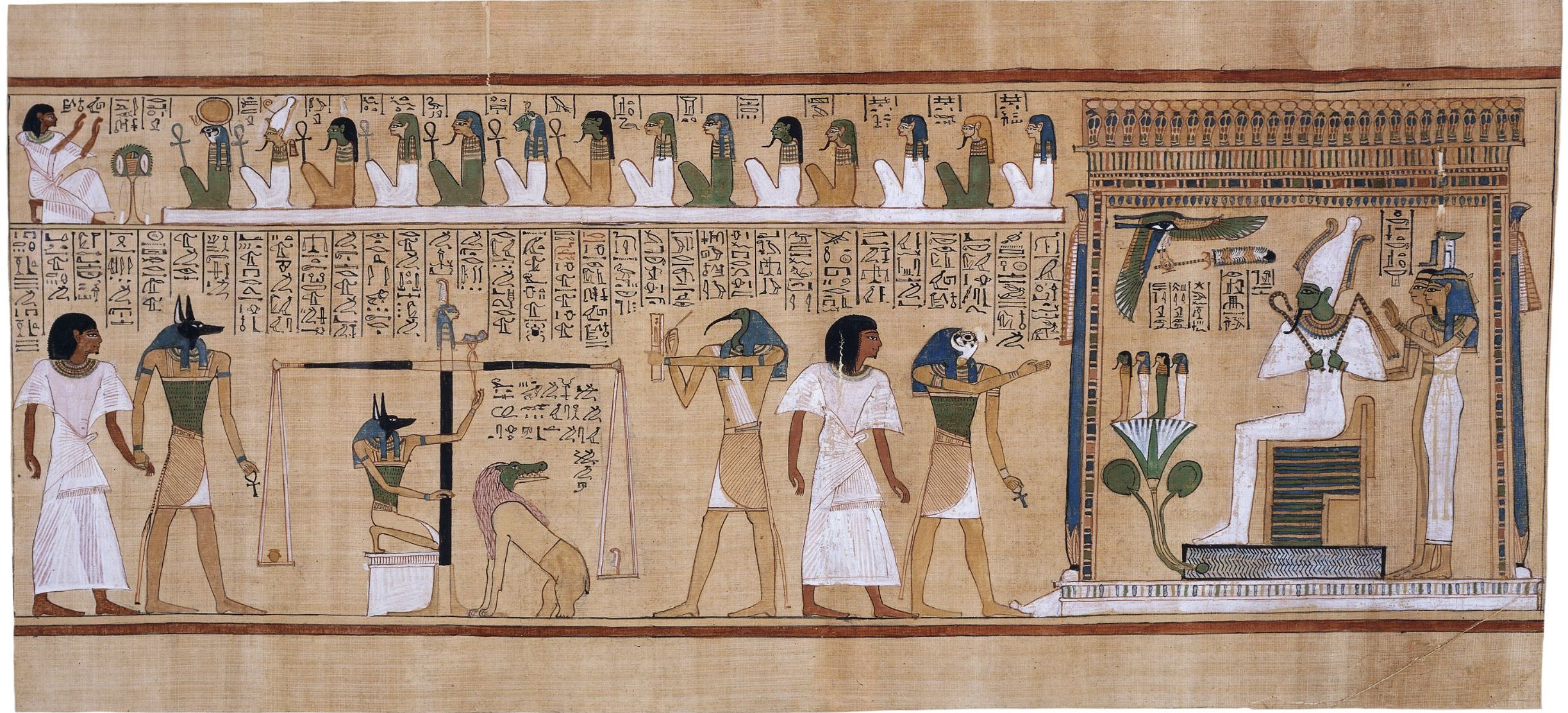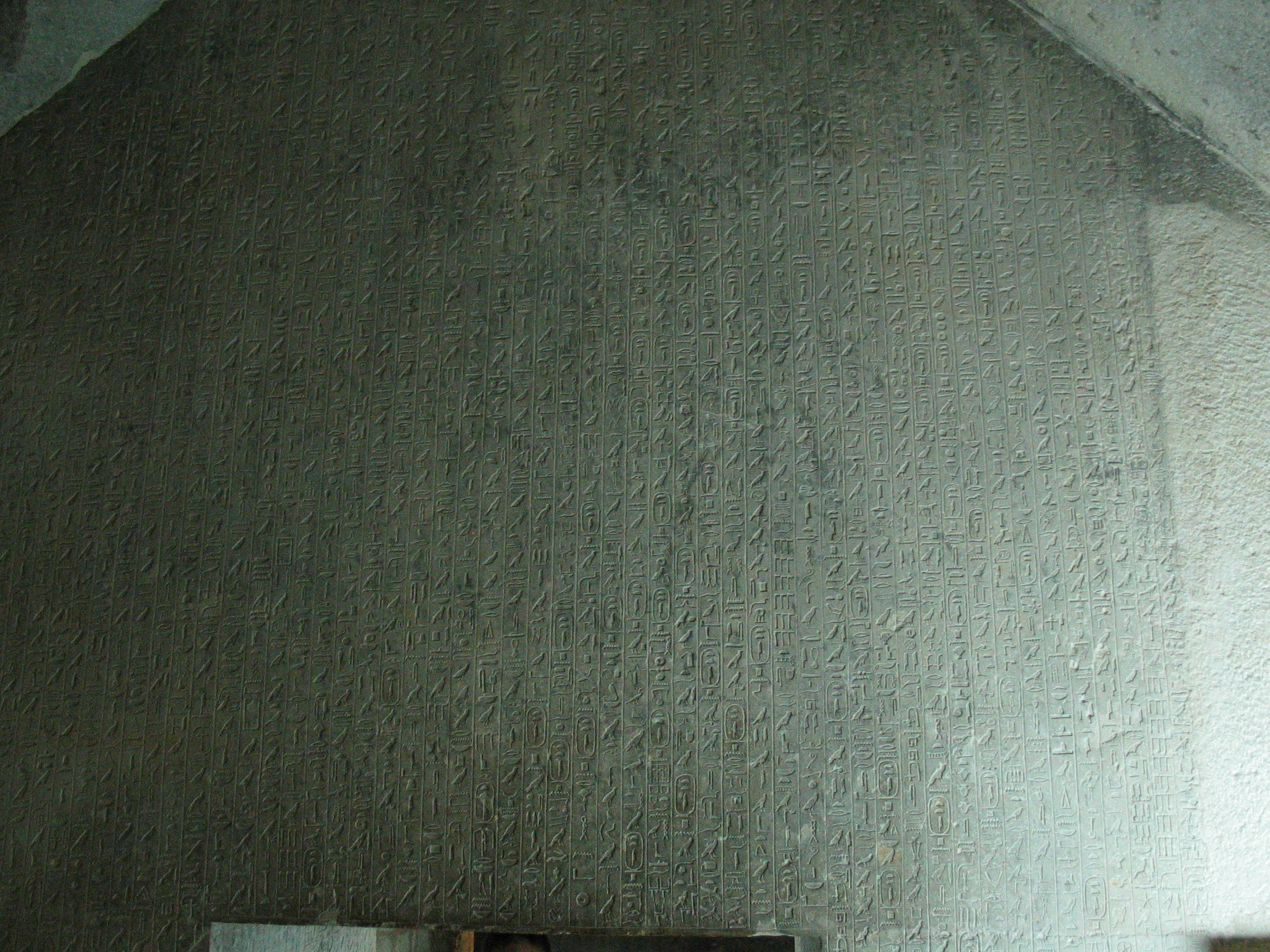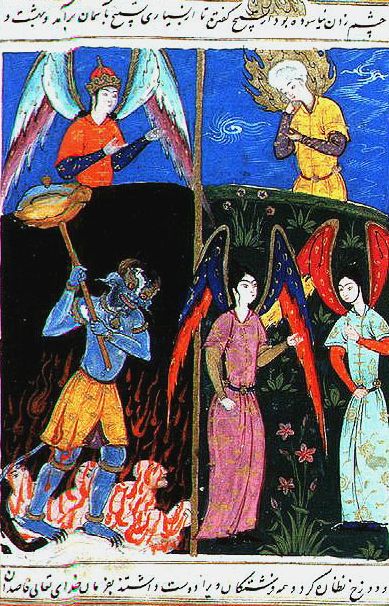|
Ammit
Ammit (; , "Devourer of the Dead"; also rendered Ammut or Ahemait) was an ancient Egyptian goddess with the forequarters of a lion, the hindquarters of a hippopotamus, and the head of a crocodile—the three largest "man-eating" animals known to ancient Egyptians. In ancient Egyptian religion, Ammit played an important role during the funerary ritual, the Judgment of the Dead. Nomenclature Ammit (; ) means "''devourer of the dead''" ("''devoureress of the dead''") or "''swallower of the dead''", where is the verb "to swallow", and signifies "the dead", more specifically the dead who had been adjudged not to belong to the ("blessed dead") who abided by the code of truth ( Ma'at). Iconography Ammit is denoted as a female entity, commonly depicted with the head of a crocodile, the forelegs and upper body of a lion (or leopard), and the hind legs and lower body of a hippopotamus. The combination of three deadly animals of the Nile: crocodile, lion, and hippopotamus, sugg ... [...More Info...] [...Related Items...] OR: [Wikipedia] [Google] [Baidu] |
Duat
The Duat or Tuat (Ancient Egyptian: Hieroglyph: 𓇽 romanized: dwꜣt) is a concept in ancient Egyptian mythology involving death. It is most often seen as a realm where people go after they die. Due to linguistic shifts within Ancient Egypt, the ''Duat'' has also been called Te () and Amenthes (). What is known of the ''Duat'' derives principally from funerary texts such as the '' Book of Gates'', the ''Book of Caverns'', the '' Coffin Texts'', the '' Amduat'', and the ''Book of the Dead,'' among many other sources. It is generally known best as a dark subterranean realm that not only houses the deceased, but a variety of deities. Common deities depicted in these texts are Osiris, Anubis, Thoth, Horus, and Maat in various forms. While all of these documents involve the ''Duat'', each of them fulfilled a different purpose and depict the ''Duat'' in a variety of unique ways. Overview This realm is most often depicted as a setting for a variety of rituals and mythological e ... [...More Info...] [...Related Items...] OR: [Wikipedia] [Google] [Baidu] |
Ancient Egyptian Afterlife Beliefs
Ancient Egyptian afterlife beliefs were centered around a variety of complex ritual A ritual is a repeated, structured sequence of actions or behaviors that alters the internal or external state of an individual, group, or environment, regardless of conscious understanding, emotional context, or symbolic meaning. Traditionally ...s that were influenced by many aspects of Egyptian culture. Ancient Egyptian religion, Religion was a major contributor, since it was an important social practice that bound all Egyptians together. For instance, many of the Egyptian gods played roles in guiding the souls of the dead through the afterlife. With the evolution of writing, religious ideals were recorded and quickly spread throughout the Egyptian community. The solidification and commencement of these doctrines were formed in the creation of afterlife texts which illustrated and explained what the dead would need to know in order to complete the journey safely. Egyptian religious doctrine ... [...More Info...] [...Related Items...] OR: [Wikipedia] [Google] [Baidu] |
Maat
Maat or Maʽat ( Egyptian: ''mꜣꜥt'' /ˈmuʀʕat/, Coptic: ⲙⲉⲓ) comprised the ancient Egyptian concepts of truth, balance, order, harmony, law, morality, and justice. Maat was also the goddess who personified these concepts, and regulated the stars, seasons, and the actions of mortals and the deities who had brought order from chaos at the moment of creation. Her ideological opposite was Isfet (Egyptian '' jzft''), meaning injustice, chaos, violence or to do evil. Pronunciation Cuneiform texts indicate that the word ''m3ˤt'' was pronounced /múʔʕa/ during the New Kingdom of Egypt, having lost the feminine ending ''t''. Vowel assimilation of ''u'' to ''e'' later produced the Coptic word "truth, justice". History The earliest surviving records indicating that Maat is the norm for nature and society, in this world and the next, were recorded during the Old Kingdom of Egypt, the earliest substantial surviving examples being found in the Pyramid Texts of Unas ( and ... [...More Info...] [...Related Items...] OR: [Wikipedia] [Google] [Baidu] |
Book Of The Dead
The ''Book of the Dead'' is the name given to an Ancient Egyptian funerary texts, ancient Egyptian funerary text generally written on papyrus and used from the beginning of the New Kingdom of Egypt, New Kingdom (around 1550 BC) to around 50 BC. "Book" is the closest term to describe the loose collection of texts consisting of a number of magic spells intended to assist a dead person's journey through the ''Duat'', or underworld, and into the afterlife and written by many priests over a period of about 1,000 years. In 1842, the Egyptologist Karl Richard Lepsius introduced for these texts the German name ''Todtenbuch'' (modern spelling ''Totenbuch''), translated to English as 'Book of the Dead'. The original Egyptian name for the text, transliterated , is translated as ''Spells of Coming Forth by Day''. The ''Book of the Dead'', which was placed in the coffin or burial chamber of the deceased, was part of a tradition of funerary texts which includes the earlier Pyramid Texts and ... [...More Info...] [...Related Items...] OR: [Wikipedia] [Google] [Baidu] |
Afterlife
The afterlife or life after death is a purported existence in which the essential part of an individual's Stream of consciousness (psychology), stream of consciousness or Personal identity, identity continues to exist after the death of their physical body. The surviving essential aspect varies between belief systems; it may be some partial element, or the entire soul or spirit, which carries with it one's personal identity. In some views, this continued existence takes place in a Supernatural, spiritual realm, while in others, the individual may be reborn into World#Religion, this world and begin the life cycle over again in a process referred to as reincarnation, likely with no memory of what they have done in the past. In this latter view, such rebirths and deaths may take place over and over again continuously until the individual gains entry to a spiritual realm or otherworld. Major views on the afterlife derive from religion, Western esotericism, esotericism, and metaphy ... [...More Info...] [...Related Items...] OR: [Wikipedia] [Google] [Baidu] |
Ancient Egyptian Conception Of The Soul
The ancient Egyptians believed that a soul ( kꜣ and bꜣ; Egypt. pron. ka/ba) was made up of many parts. In addition to these components of the soul, there was the human body (called the ''ḥꜥ'', occasionally a plural '' ḥꜥw'', meaning approximately "sum of bodily parts"). According to ancient Egyptian creation myths, the god Atum created the world out of chaos, utilizing his own magic ( ḥkꜣ). Because the earth was created with magic, Egyptians believed that the world was imbued with magic and so was every living thing upon it. When humans were created, that magic took the form of the soul, an eternal force which resided in and with every human. The concept of the soul and the parts which encompass it has varied from the Old Kingdom to the New Kingdom, at times changing from one dynasty to another, from five parts to more. Most ancient Egyptian funerary texts reference numerous parts of the soul: Collectively, these spirits of a dead person were called the '' ... [...More Info...] [...Related Items...] OR: [Wikipedia] [Google] [Baidu] |
Hunefer Pic
Hunefer was a scribe during the 19th Dynasty (''fl.'' ). He was the owner of the Papyrus of Hunefer, a copy of the funerary Egyptian Book of the Dead, which represents one of the classic examples of these texts, along with others such as the Papyrus of Ani. Hunefer was "Scribe of Divine Offerings", " Overseer of Royal Cattle", and steward of Pharaoh Seti I. See also * List of ancient Egyptian scribes References External links Judgement in the Presence of Osiris, Hunefer's Book of the Dead Smarthistory Smarthistory is a free resource for the study of art history created by art historians Beth Harris and Steven Zucker. Smarthistory is an independent not-for-profit organization and the official partner of the Khan Academy for art history. It is ... Papyrus of Hunefer Ancient Egyptian scribes Ancient Egyptian overseers of the cattle Book of the Dead {{AncientEgypt-bio-stub ... [...More Info...] [...Related Items...] OR: [Wikipedia] [Google] [Baidu] |
Ancient Egypt
Ancient Egypt () was a cradle of civilization concentrated along the lower reaches of the Nile River in Northeast Africa. It emerged from prehistoric Egypt around 3150BC (according to conventional Egyptian chronology), when Upper and Lower Egypt were amalgamated by Menes, who is believed by the majority of List of Egyptologists, Egyptologists to have been the same person as Narmer. The history of ancient Egypt unfolded as a series of stable kingdoms interspersed by the "Periodization of ancient Egypt, Intermediate Periods" of relative instability. These stable kingdoms existed in one of three periods: the Old Kingdom of Egypt, Old Kingdom of the Early Bronze Age; the Middle Kingdom of Egypt, Middle Kingdom of the Middle Bronze Age; or the New Kingdom of Egypt, New Kingdom of the Late Bronze Age. The pinnacle of ancient Egyptian power was achieved during the New Kingdom, which extended its rule to much of Nubia and a considerable portion of the Levant. After this period, Egypt ... [...More Info...] [...Related Items...] OR: [Wikipedia] [Google] [Baidu] |
Heart
The heart is a muscular Organ (biology), organ found in humans and other animals. This organ pumps blood through the blood vessels. The heart and blood vessels together make the circulatory system. The pumped blood carries oxygen and nutrients to the tissue, while carrying metabolic waste such as carbon dioxide to the lungs. In humans, the heart is approximately the size of a closed fist and is located between the lungs, in the middle compartment of the thorax, chest, called the mediastinum. In humans, the heart is divided into four chambers: upper left and right Atrium (heart), atria and lower left and right Ventricle (heart), ventricles. Commonly, the right atrium and ventricle are referred together as the right heart and their left counterparts as the left heart. In a healthy heart, blood flows one way through the heart due to heart valves, which prevent cardiac regurgitation, backflow. The heart is enclosed in a protective sac, the pericardium, which also contains a sma ... [...More Info...] [...Related Items...] OR: [Wikipedia] [Google] [Baidu] |
Egyptian Language
The Egyptian language, or Ancient Egyptian (; ), is an extinct branch of the Afro-Asiatic languages that was spoken in ancient Egypt. It is known today from a large corpus of surviving texts, which were made accessible to the modern world following the decipherment of the ancient Egyptian scripts in the early 19th century. Egyptian is one of the earliest known written languages, first recorded in the hieroglyphic script in the late 4th millennium BC. It is also the longest-attested human language, with a written record spanning over 4,000 years. Its classical form, known as " Middle Egyptian," served as the vernacular of the Middle Kingdom of Egypt and remained the literary language of Egypt until the Roman period. By the time of classical antiquity, the spoken language had evolved into Demotic, and by the Roman era, diversified into various Coptic dialects. These were eventually supplanted by Arabic after the Muslim conquest of Egypt, although Bohairic Coptic ... [...More Info...] [...Related Items...] OR: [Wikipedia] [Google] [Baidu] |






